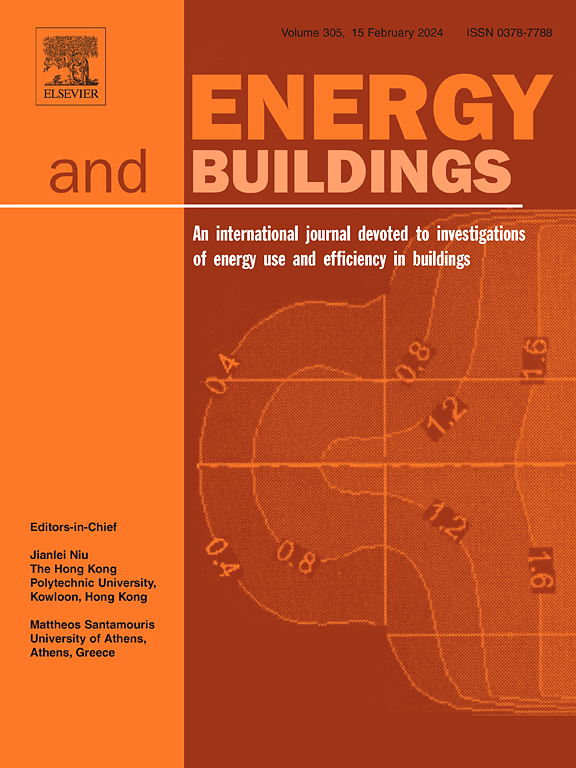Experimental and numerical investigation of vertical temperature gradients in warehouses: Retrofit interventions to manage temperature sensitive products
IF 6.6
2区 工程技术
Q1 CONSTRUCTION & BUILDING TECHNOLOGY
引用次数: 0
Abstract
This paper investigates vertical temperature gradients in warehouse design to ensure optimal storage conditions. In warehouses with ceilings over 10.0 m high, buoyancy-driven warm air often causes significant temperature disparities. This study uses a combination of field measurements and computational fluid dynamics (CFD) simulations to measure thermal stratification. It also examines the impact of mechanical systems, such as ceiling-mounted radiant cooling and floor heating. CFD simulations are validated against field data, showing that destratification cooling systems can reduce ceiling temperatures by up to 4.0 °C in summer. These systems can also raise floor temperatures by 7.0 °C during heating. Field data collected over a year show vertical temperature gradients up to 3.0 °C. However, the temperature difference between ceiling and floor remains below 0.2 °C, keeping indoor temperatures within an ideal range of 20.0–24.0 °C year-round. The study highlights the benefits of combining radiant cooling with floor heating to achieve temperature uniformity. Floor heating scenarios generate air velocities of up to 0.8 m/s, with an average velocity of 0.2 m/s. In contrast, ceiling-mounted cooling systems result in slightly lower air velocities, reaching a maximum of 0.5 m/s and an average of 0.1 m/s. This research is especially relevant for temperature-sensitive products, as illustrated by a case study involving cured tobacco bales. The retrofit proposals ensure optimal indoor conditions and reduce vertical temperature gradients. These findings validate the proposed methodology as a reliable approach for managing temperature variations in warehouses handling temperature-sensitive goods.
求助全文
约1分钟内获得全文
求助全文
来源期刊

Energy and Buildings
工程技术-工程:土木
CiteScore
12.70
自引率
11.90%
发文量
863
审稿时长
38 days
期刊介绍:
An international journal devoted to investigations of energy use and efficiency in buildings
Energy and Buildings is an international journal publishing articles with explicit links to energy use in buildings. The aim is to present new research results, and new proven practice aimed at reducing the energy needs of a building and improving indoor environment quality.
 求助内容:
求助内容: 应助结果提醒方式:
应助结果提醒方式:


